#yasavi
Explore tagged Tumblr posts
Text
10 (More) Random Entries from the Dictionary of Islamic Architecture
The following entries were pulled from the Dictionary of Islamic Architecture (1995).

Iznik tilework (architectural facet)
Fatimids (people)
Gujarat (region)
Susa (city)
Yasavi (shrine of Ahmed Yasavi) (building)
Ukhaidhir (building complex)
Machicolation (architectural facet)
Kharana (building)
Bedestan (structure type)
Anjar ('Ayn Jar) (city)
(Previously: 10 Random Entries from the Dictionary of Islamic Architecture)

----------------------------------------------------------------------------
❯ ❯ Iznik tilework (architectural facet)

Ottoman tiles produced from the mid-sixteenth century will have a distinctive under-glaze blue color and design.
Iznik is a town in north-west Anatolia famed for its pottery production. during the Ottoman period. Under the Byzantines the town was known as Nicea and enclosed within a large circuit wall which still survives. The city was one of the first towns to be conquered by the Ottoman Turks and contains the earliest dated Ottoman mosque known as the Haci Ozbek Cami.
Before 1550 the kilns of Iznik seem to have been mostly concerned with making pottery rather than tiles. Sometime around 1550 there was a change to tile production which was induced by the tiling of three great monuments, the Dome of the Rock in Jerusalem, the Suleymaniye Mosque in Damascus and the Suleymaniye complex in Istanbul. Before 1550 Ottoman tiles were hexagonal with bold cuerda sec designs, the new Iznik tiles were square and carried underglaze designs. The new shape and use of underglaze painting enabled large multi-tile compositions to be made. Another innovation of this period was the use of thick red slip as an underglaze color which gave Iznik pottery its distinctive appearance.
See also: Istanbul; Ottomans; Suleymaniye.
❯ Further reading ❯ (1) J. Raby, 'A seventeenth-century description of IznikNicea', Istanbuler Mitteilungen, 149-188, 1976; (2) J. Raby and N. Atasoy, lznik: The Pottery of Ottoman Turkey, London 1989. ❯ Text ❯ Peterson (1995) Dictionary of Islamic Architecture, page 130. ❯ Photos ❯ (1) SOPA Images/Contributor; (2) Ayhan Altun; (3) Ayhan Altun.
----------------------------------------------------------------------------
❯ ❯ Fatimids (people)

Caliphs who ruled North Africa, Egypt and Palestine from the tenth to the twelfth century.
The Fatimids were a religious dynasty who claimed descent from the prophet's daughter Fatima. In historical terms the Fatimids belonged to an extreme sect of Shi'a known as Ismailis who emerged as rivals to both the Umayyads of Spain and the Abbasid caliphate in Baghdad. The Fatimids' first successes were amongst the Berber tribes of North Africa who adopted the Fatimids as leaders. Their first conquest destroyed the Aghlabid rulers of Ifriqiyya (Tunisia) in 909 and replaced them with the Fatimid caliph the Mahdi Ubaid Allah. In the following years the Fatimids pursued an aggressive expansionist policy, conquering Tripoli and making raids on the French and Italian coasts. During the reign of the Caliph al-Mu'iz the empire was expanded westwards to include the whole of North Africa to the Atlantic Ocean and eastwards to Egypt and Palestine in 969. The conquest of Egypt began a new phase in Fatimid history with the foundation of Cairo as the imperial capital.
The architecture of the Fatimids can be divided into two periods, the North African period from 909 to 969 and the Egyptian period from 969 to 1171. The North African period was a time of expansion and religious extremism which can be seen in the architecture of the mosques. Examples of early Fatimid mosques are at Ajdabiya in Libiya and Mahdiya in Tunisia. The first of these was the mosque of Mahdiya, which was built like a fortress with two square comer towers flanking a single projecting monumental entrance. The mosque at Ajdabiya had a similar plan but lacks the monumental entrance facade. For ideological reasons, neither of these mosques had a minaret, a feature which remained absent until the last years of Fatimid rule in Egypt.
See also: Ajdabiya; Cairo (The Fatimid Period); Libiya; Mahdiya; Tunisia.
❯ Text ❯ Peterson (1995) Dictionary of Islamic Architecture, pages 86-87. ❯ Photos ❯ (1) J.M. Bloom; (2) Wikimedia Commons.
----------------------------------------------------------------------------
❯ ❯ Gujarat (region)

Predominantly Hindu coastal region of western India with distinctive Islamic architecture. Gujarat is a fertile low-lying region located between Pakistan, Rajasthan and the Indian Ocean. The position of the region on the Indian Ocean has meant that it has always had extensive trading contacts particularly with the Arabian peninsula. It is likely that the first Muslims in Gujarat arrived sometime in the eighth century although there is little published archaeological evidence of this. The oldest standing mosques in the area are located at the old seaport of Bhadresvar in western Gujarat and have been dated to the mid-twelfth century although they may stand on older foundations.
The first Muslim conquest of the area took place at the end of the thirteenth century under the Ala al-Din the Khaliji sultan of Delhi. The earliest monument from this period is the Jami Masjid at Cambay which includes columns taken from ruined Hindu and Jain temples. The form of the mosque resembles that of the Quwwat al-Islam Mosque in Delhi with a rectangular courtyard with gateways on three sides and an arched screen in front of the sanctuary on the west side. Other early mosques built in a similar style include those of Dholka Patan and Broach all of which are located close to the coast. During the fifteenth century many mosques, tombs and other monuments were built in the regional capital Ahmadabad, the most significant of which are the Jami Masjid and the tomb of Ahmad Shah. These buildings incorporate many features from Hindu temple architecture including projecting balconies, perforated jali screens and square decorated columns. Monuments of the sixteenth century contain the same Hindu and Islamic elements combined in a more developed fashion as can be seen in the Jami Masjid of Champaner built in 1550. The Mughal conquest in the mid-sixteenth century brought Gujarat into the mainstream of architectural development. However, the architecture of the region exerted a considerable influence on the Mughal emperor Akbar, who built the city of Fatehpur Sikri in Gujarati style.
The secular architecture of Gujarat is mostly built of wood and characterized by elaborately carved screens and overhanging balconies. Another characteristic feature of the region is the use of step wells, or vavs, which consist of deep vertical shafts, approached via recessed chambers and steps. Sometimes these were very elaborate structures with multiple tiers of steps.
See also: Ahmadabad; India; Mughals; Qutb Minar.
❯ Further Reading ❯ (1) Z. A. Desai, 'Some Mughal inscriptions from Gujarat', Epigraphica Indica: Arabic and Persian Supplement, 1970, 63-92; (2) J. Jain-Neubauer, The Stepwells of Gujarat in Art Historical Perspective, New Delhi 1981; (3) E. Koch, '[The] Influence [of Gujarat] on Mughal architecture', in Ahmadabad, ed. G. Michell and S. Shah, Bombay 1988, 168-185; (4) M. Shokooy, M. Bayani-Wolpert and N. H. Shokooy, Bhadresvar: The Oldest Islamic Monuments in India, part of Studies in Islamic Art and Architecture, Supplements to Muqamas, vol. 2, Leiden 1988. ❯ Text ❯ Peterson (1995) Dictionary of Islamic Architecture, pages 102-103. ❯ Photos ❯ (1) Gujarat Tourism; (2) C. Krishna Gairola/University of Washington Libraries, Special Collections; (3) Booksfact.
----------------------------------------------------------------------------
❯ ❯ Susa / Soussa / Sousse (city)

Tunisian coastal city noted for its ninth-century Aghlabid buildings. Under the Byzantines the city was known as Justinianopolis in honor of Justinian who rebuilt it after the Vandal destruction. In 689 CE, it was captured by the Arabs and became one of the principal ports for the Aghlabid conquest of Sicily. In 827, the city was refortified with ramparts and walls built in the Byzantine style. Important Aghlabid buildings within the city include the ribat built or restored by Ziyadat Allah in 821, the Bu Fatata Mosque built in 840 and the Great Mosque established in 859.
See also: Aghlabids; Tunisia.
❯ Text ❯ Peterson (1995) Dictionary of Islamic Architecture, page 271. ❯ Photos ❯ TravelFeed.
----------------------------------------------------------------------------
❯ ❯ Yasavi (shrine of Ahmed Yasavi) / mausoleum of Khoja Ahmed Yasawi) (building)

Shrine built by Timur for his son Jahangir between 1397 and 1399.
The shrine is located in the city of Turkestan (modern Yasi) in the Republic of Kazakhstan. The building is oriented north-south on a rectangular ground plan (65.5m by 46.5m) with portals at the south and north ends. The main doorway is the magnificent south portal which is flanked by huge cylindrical corner towers or minarets over 20m high. Behind the portal is the dome of the prayer hall rising to a height of over 37m. At the other end of the structure is the north facade in the center of which is the entrance to the mausoleum. The mausoleum is capped by a tall 'melon-shaped' ribbed dome set on a high cylindrical drum. Externally the building is well articulated with its two entrance facades, domes and an extensive covering of tilework. Internally, however, there is less feeling of unity beyond the principal rooms: leading off from the prayer hall and mausoleum are many smaller rooms with different vaulting systems which do not seem integrated in an overall design.
❯ Text ❯ Peterson (1995) Dictionary of Islamic Architecture, page 310. ❯ Photos ❯ (1) Yevgeniy Volkov/Shutterstock; (2) leszczem/Shutterstock; (3) AlexelA/Shutterstock.
----------------------------------------------------------------------------
❯ ❯ Ukhaidhir / al-Ukhaidir Fortress (building complex)

Early Abbasid palace in the desert of south-western Iraq.
The palace stands in the desert west of the city of Kerbala and east of the oasis of Shithatha. The building is made out of rough-hewn limestone blocks and mud plaster with baked brick used for roofing vaults, resembling earlier Sassanian structures (cf. Kharana in Jordan). The palace may be divided into two structural phases, a central palace core and an outer enclosure wall added slightly later. The exterior curtain wall is composed of tall blind niches alternating with solid semi-circular buttress towers. On top of the wall there was a parapet which was cantilevered over the niches allowing a continuous series of slits (machicolation) which could protect the lower parts of the wall from attack. The main gateway is set between two quarter-round towers and contains a slot for a portcullis. To the right of the entrance on the outside there is a large stable block. The central core of the palace contains a mosque, a bath house and a main reception hall. The upper floor is reached by ramps running up at right angles to the axis of the main gateway. There are small tunnels running over the main vaults which provided cooling and ventilation.
Recent survey work in the vicinity of Ukhaidhir has demonstrated the development of the area during the early Islamic period, starting with the small palace at Tulul Ukhaidhir several kilometers to the north of the main palace. In addition there is an outer mud-brick enclosure containing a variety of mud-brick buildings which are now only visible as humps.
See also: Abbasids: Atshan, Khan; Iraq; Sassanians.
❯ Further reading ❯ (1) G. Bell, Palace and Mosque at Ukhaidhir: A Study in Early Muhammadan Architecture, Oxford 1914; (2) B. Finnster and J. Schmidt, Sasaidische und fruhislamische Ruinem im Iraq, Baghdader Miffeilungen 8, Berlin 1976. ❯ Text ❯ Peterson (1995) Dictionary of Islamic Architecture, page 294. ❯ Photos ❯ (1) Taisir Mahdi; (2) Mustafa Hamzah Almosawy.
----------------------------------------------------------------------------
❯ ❯ Machicolation (architectural facet)

Downward openings or slits used defending a castle or fortification.
There are three types of machicolation, a box machicolation, concealed machicolation and continuous machicolation. A box machicolation resembles a projecting window or gallery and may also be used for this purpose. There are usually one or more slits in the floor and the box is normally located over a gate or doorway. Box machicolations were used in Roman times and their first use in Islamic structures is at Qasr al-Hayr (East and West).
Concealed machicolations are usually set into the roof above a vaulted passage leading from a gateway and are often used in conjunction with a portcullis. The first example in Islamic architecture comes from the eighth-century palace of Ukhaidhir in Iraq. These were frequently used in medieval Islamic fortifications.
Continuous machicolation consists of a parapet which is cantilevered over the front face of a wall with a series of downward openings. The earliest example of this is also at Ukhaidhir although it is not used later on in Islamic architecture.
See also: Fortification.
❯ Text ❯ Peterson (1995) Dictionary of Islamic Architecture, page 167. ❯ Photos ❯ (1) Bernard Gagnon; (2) Vyacheslav Argenberg/Getty.
----------------------------------------------------------------------------
❯ ❯ Kharana / Qasr al-Kharana (building)

Early Islamic or Sassanian building in the Jordanian desert 60km east of Amman.
Kharana is a remarkably preserved square two-story structure with solid semi-circular and circular buttress towers. The building is made out of roughly-hewn stone blocks laid in courses covered with successive layers of plaster. There are three rows of vertical slits in the walls which have been interpreted as arrow slits, although. their height above the inside floor level makes this unlikely. The gateway is set between two quarter-round towers which lead into an entrance passage flanked with two long vaulted rooms that functioned as stables. Inside the building is a square courtyard with a series of undecorated rooms (for storage?) whilst on the upper floor the rooms are decorated with plaster/stucco designs similar to those at Ukhaidhir in Iraq. These include engaged pilasters, blind niches and decorative bosses. Two of the upper rooms have semi-domes resting on wide squinches at the end.
Although it was built before 710 (according to an inscription) and is Sassanian in style, the building is now generally believed to be early Islamic.
See also: Tunisia.
❯ Further reading ❯ S. Urice, Qasr Kharana in the Transjordan, Durham, NC: AASDR, 1987. ❯ Text ❯ Peterson (1995) Dictionary of Islamic Architecture, page 147. ❯ Photos ❯ Haupt & Binder.
----------------------------------------------------------------------------
❯ ❯ Bedestan (structure type)

Special closed form of Turkish market where goods of high value were traded. The usual form of bedestan is a long domed or vaulted hall two storeys high with external shop units.
Originally, bedestan referred to the area of a market where cloth was sold or traded from the bezzaz han (cloth market). The earliest bedestans were probably specific areas of a general bazar or market. The earliest known bedestan is the Beysehir Bedestan built in 1297 according to an inscription above the gateway. The building consists of a closed rectangular courtyard covered by six domes supported on two central piers. There are doorways on three sides and on the outside there are small open shop units, six on the east and west sides and nine on the north and south sides.
During the Ottoman period bedestans developed as a specific building type and became the center of economic life in a city. Because they could be locked, they were often used for jewelry or money transactions and came to be regarded as signs of prosperity in a city. Ottoman bedestans were built in a variety of forms and may include features such as external shops, internal cell units and arastas (arcades). The simplest plan consists of a square domed hall with one or two entrances like those at Amasya or Trabzon. More complicated structures like the Rustem Pasha Bedestan in Erzerum consist of a central enclosed courtyard surrounded by a closed vaulted corridor containing shop units.
❯ Text ❯ Peterson (1995) Dictionary of Islamic Architecture, page 33. ❯ Photos ❯ (1) Mustafa Cambaz; (2) GarySandyWales; (3) selimaksan.
----------------------------------------------------------------------------
❯ ❯ Anjar ('Ayn Jar) (city)

Umayyad city in Lebanon.
Anjar was built by the Umayyad caliph al-Walid in 714-715 CE. The city is contained within a rectangular enclosure (370m north-south and 310m east-west) supported by a series of solid semi-circular buttress towers and four hollow corner towers. There are four principal gateways and the walls were originally crowned with stepped merlons (crenellation). Internally the city is built to a regular plan recalling earlier Byzantine and Roman cities. There are four principal colonnaded streets which meet at the center in a tetrapylon. Many of the buildings are built of alternating courses of ashlar blocks and layers of baked brick. There is a series of shop units (3.5m wide and 5m deep) lining the main streets behind the colonnades. In the south-east quadrant of the city is a palace within a rectangular enclosure (about 70 by 60 m). The interior of the palace is divided into four units arranged symmetrically; at the south end there is a building with a triple aisles and an apse resembling a basilical hall, this is duplicated at the north end. To the north of the palace is the mosque which is entered from the west street. The mosque is a rectangular structure (47m by 30m) with a small central courtyard surrounded by two aisles on the west, east and qibla (south) sides whilst there is one aisle on the north side. On either side of the mihrab are two entrances which lead into a narrow lane that connects with the palace. There is a small bath house next to the north gate which comprises a square vaulted hall, leading via two intermediate rooms into a hot room.
❯ Text ❯ Peterson (1995) Dictionary of Islamic Architecture, page 20. ❯ Photos ❯ (1) Malcolm P. Chapman; (2) Henryk Sadura; (3) Eric Lafforgue/Art in All of Us/Contributor.
----------------------------------------------------------------------------
Current article: 10 (More) Random Entries from the Dictionary of Islamic Architecture
Previous article: 10 Random Entries from the Dictionary of Islamic Architecture
#islamic architecture#writeblr#writing research#masterpost#writing#writing tips#writing advice#culture#novel writing#fiction writing#worldbuilding#writing stuff#architecture research#construction material#fatimids#gujarat#susa#sousse#yasavi#ahmed yasavi#ukhaidhir#machicolation#kharana#iznik tiles#izkik#bedestan#anjar#architecture#spelling and pronunciation may differ#exact dates may differ
8 notes
·
View notes
Photo

📃 What comes from You is good to me Be it roses or thorns which pour down Or robe of dignity or shroud And pleasant is Your blessing and pleasant Your affliction. . Turkish sufi poet Yunus Emre 📃 ما يأتي منك هو خير لي سواء كانت ورود أو أشواك تتساقط أو رداء كرامة أو كفن فما أطيب عطاؤك و ما أحسن ابتلاؤك. . الشاعر الصوفي التركي يونس امره 📃 📸 Photo from the movie “Yunus Emre : Aşkın Sesi, The Voice of Love”. الصورة من فيلم “يونس امره، صوت الحب”.
📃 #yunus_emre #taptuk_emre #sufism #islam #turkmen #turkey #dervish #spirituality #sufipoetry #poetry #sufimusic #sama #love #yasavi #photooftheday #Aşkın_Sesi #sufimovie #يونس_امره #تصوف #اسلام #تركمان #تركيا #درويش #شعر_صوفي #موسيقى_صوفية #سماع #عشق #يسوي #طابتوك_امره #صوت_الحب https://www.instagram.com/p/CGZb7u1hdoY/?igshid=1pitm6g1z4bpc
#yunus_emre#taptuk_emre#sufism#islam#turkmen#turkey#dervish#spirituality#sufipoetry#poetry#sufimusic#sama#love#yasavi#photooftheday#aşkın_sesi#sufimovie#يونس_امره#تصوف#اسلام#تركمان#تركيا#درويش#شعر_صوفي#موسيقى_صوفية#سماع#عشق#يسوي#طابتوك_امره#صوت_الحب
3 notes
·
View notes
Text
szent helyen is jártunk, ha az embert bárhová is veti a sorsa, mindent szeretne látni, ha van benne egy kis élet. nos az élet most hamarjában szűk 8 napocskát adott csak a sokmindenekre, de ez itten most a Hazrat (v. Khazrat) Sultan mecset, a bayterekből ezt is láthattuk, nem az arany kupolás (nur-astana mosque) hanem a másik.
a wikipediaból idézek most:
A kazahsztáni elnök, Nursultan Nazarbajev mecset neve "Hazret Sultan" névre keresztelt, ami azt jelenti, hogy "Szent Szultán". Mint ismert, "Hazret Sultan" - Khoja Ahmed Yasavi szufi sejk , a "Divan-i Hikmet" szerzőjének egyik epitettje , akinek mauzóleuma Türkisztánban található.
A "Hazret Sultan" mecset építése 2009 júniusában Asztanában kezdődött. Különböző időszakokban 1000 és 1500 munkás vett részt a mecset építésében. 2012. július 6-án 12: 30-kor nyitották meg a Hazret Sultan mecsetet, amely kiegészítette a főváros egyedi tárgyainak listáját.
Az épület klasszikus iszlám stílusban épült, hagyományos kazah díszítéssel. A Yesil folyó jobb partján található mecset szomszédságában van a Béke és Megbékélés Palotája , a "Kazah Eli" emlékmű és a Függetlenség tér.. Ötezer imádót tud befogadni, és ünnepnapokon - akár 10 ezer embert. A mecset területe több mint 11 hektár, az építési terület pedig 17 700 négyzetméter. Hazret Sultan rendelkezik Kazahsztán legnagyobb kupolájával, amelynek magassága 51 méter, átmérője pedig 28,1 méter. A mecsetnek nyolc kis kupolája is van, átmérője 10,45 és 7,6 méter, csúcsai pedig - 33,46 és 25, 25 méter. A mecset sarkaiban 4 77 méter magas minaret található. Az építészeti terv szerint a templomnak meg kell koronáznia a 80 méteres tornyot egy szigorúan Mekka felé irányított félholdval. Az objektum funkcionalitásaként meg kell jegyezni, hogy az épület helyet biztosít a fürdési rituáléknak és esküvőknek, a Koránt olvasó termeknek és oktatási csoportokban való üléseknek.
mi mindezekből csak annyit vettünk észre, hogy sok-sok őrök védik, le kell venni a cipőket, polcokra rakni, bele kell bújni ilyen sötétsárga köntösbe, ami mivel nagyon hideg volt és mindent magunkra vettünk ami ruhánk csak volt, szóval nem éreztük magunkat túl fényesen. odabent idilli élet folyt, hatalmas csarnokok, szőnyegen heverésző férfiak-nők-gyerekek, bámészkodtunk kicsit, fotózni sajnos nem nagyon mertem és mivel semmi különös nem történt, el is jöttünk hamar :(



pénteki mecset néven emlegetik ezt a helyet, rá nem tudtunk jönni hogy miért. itt pont ott voltunk valamelyik időpontban szerintem, de titkos szeánsz lehetett, nem észleltünk belőle semmit




megint kint, ez itt a bal sarokban az ő bubijuk, senkit nem láttunk ilyenen tekerni, sőt biciklist egyáltalán nem is. meg kutyát se! de ezen már csodálkoztam egyszer

víz-ég-levegő lobog��k a metsző jeges szélben

4 notes
·
View notes
Text
ON YOUR RELIGION
Throughout the dervish literature you will find us saying repeatedly that we are not concerned with your religion or even with the lack of it. How can this be reconciled with the fact that believers consider themselves the elect?
Man's refinement is the goal, and the inner teaching of all the faiths aims at this. In order to accomplish it, there is always a tradition handed down by a living chain of adepts, who select candidates to whom to impart this knowledge.
Among men of all kinds this teaching has been handed down. Because of our dedication to the essence, we have, in the Dervish Path, collected those people who are less concerned about externals, and thus kept pure, in secret, our capacity to continue the succession. In the dogmatic religions of the Jews, the Christians, the Zoroastrians, the Hindus and literalist Islam this precious thing has been lost.
We return this vital principle to all these religions, and this is why you will see so many Jews, Christians and others among my followers. The Jews say that we are the real Jews, the Christians, Christians.
It is only when you know the Higher Factor that you will know the true situation of the present religions and of unbelief itself. And unbelief itself is a religion with its own form of belief.
Ahmad Yasavi
The Way of the Sufi
New editions in Paperback, eBook, Audiobook. Also, a free online edition:
http://idriesshahfoundation.org/books/the-way-of-the-sufi/
3 notes
·
View notes
Text
SOBRE TU RELIGIÓN
A través de la literatura derviche nos encontrarás diciendo repetidamente que no nos concierne tu religión o incluso tu falta de ella.
¿Cómo puede esto conciliarse con el hecho de que los creyentes se consideran a sí mismos los elegidos?
El refinamiento del hombre es la meta, y la enseñanza interior de todos los credos religiosos apuntan a esto. Para poder lograrlo, hay siempre una tradición transmitida por una cadena viviente de adeptos, quienes seleccionan candidatos a quienes impartir este conocimiento.
Esta enseñanza ha sido transmitida a toda clase de hombres. Dada nuestra dedicación a la esencia, hemos reunido, en el Camino Derviche, a todas aquellas personas que están poco interesadas en las apariencias; y de este modo conservamos, en secreto, nuestra capacidad para continuar la sucesión. En las dogmáticas religiones de los judíos, los cristianos, los zoroástricos, los hindúes y el Islam literalista, este elemento precioso se ha perdido.
Nosotros devolvemos el principio vital a todas estas religiones, y es por esto que verás a tantos judíos, cristianos y otros entre mis seguidores. Los judíos dicen que nosotros somos los verdaderos judíos; los cristianos, cristianos.
Sólo cuando conozcas el Factor Superior advertirás la verdadera situación de las religiones actuales y de la propia incredulidad; y esta misma incredulidad es una religión con su propia forma de creencia.
Ahmad Yasavi
El camino del Sufi
Puedes leer el libro, gratis, aquí:
http://idriesshahfoundation.org/es/libros/el-camino-del-sufi/
1 note
·
View note
Text
YASAVI પ્રવેશ 2022 એપ્લિકેશન પ્રક્રિયા yet.nta.ac.in પર શરૂ થાય છે, અહીં સીધી લિંક તપાસો
YASAVI પ્રવેશ 2022 એપ્લિકેશન પ્રક્રિયા yet.nta.ac.in પર શરૂ થાય છે, અહીં સીધી લિંક તપાસો
ટાઈમ્સ ઓફ ઈન્ડિયા એજ્યુકેશન એ એક અગ્રણી સ્ત્રોત છે જે શિક્ષણ અને નોકરીઓ પર વિશ્વસનીય અને નવીનતમ સમાચાર પ્રદાન કરે છે. CBSE, ICSE, બોર્ડ પરીક્ષાઓ, કોલેજો, યુનિવર્સિટીઓ, સ્પર્ધાત્મક પરીક્ષાઓ, તારીખ પત્રક, પ્���વેશપત્ર, આન્સર કી, પરિણામ, પ્રવેશ, પરીક્ષા વિશ્લેષણ, નોકરીના સમાચાર, ભરતી સૂચનાઓ વગેરે પર બ્રેકિંગ ન્યૂઝ મેળવો. ધ ટાઇમ્સ ઑફ ઇન્ડિયા એજ્યુકેશન વ્યાપકપણે આવરી લે છે શિક્ષણના સમાચાર, નોકરીના…
View On WordPress
0 notes
Text
Best Wishes Eid al Adha 2022 & Ahmed Yasavi's Diwan-i Hikmet
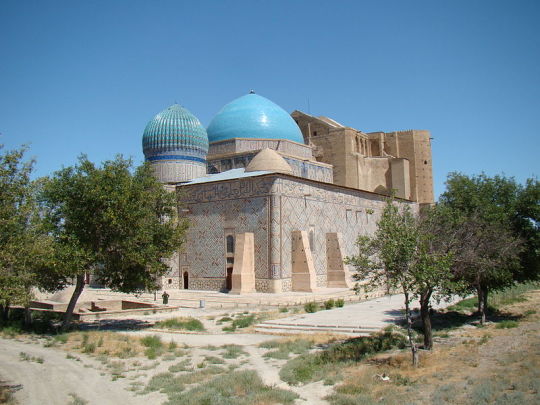
Счастливого Курбан-Байрам!
Kurban Bayramı kutlu olsun!
Ciidul-Adxa Wanaagsan!
Құрбан айт мерекесі құтты болсын!
! قۇربان ھېيت مۇبارەك بولسۇن
курбон хайит муборак !
Gurban baýramyňyz gutly bolsun!
! عید قربان مبارک
Корбан бәйрәме белән!
! عید الاضحی مبارک ہو
Иди Курбон муборак!
! عيد الأضحى السعيد
Die besten Glückwünsche zu Eid al-Adha!
Joyeux Aïd el-Adha!
Орозо айт майрамыңыздар менен!
Gëzuar Kurban Bajramin!
Best wishes for a happy Eid al Adha!
Shamsaddin
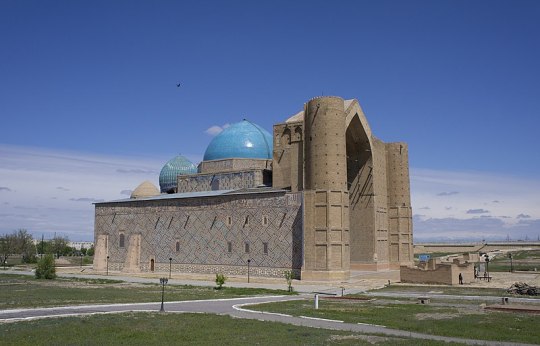
====================================
Long before ….
Nezami Ganjavi (1141-1209)
long before ….
Muhi el-din ibn Arabi (1165-1240)
long before ….
Jalal al-din Rumi (1207-1273),
Haji Bektash Veli (1209-1271),
Safi-ad-din Ardabili (1252-1334),
Amir Khusraw (1253-1325),
and
Kemal Khujandi (1321-1400)
…….................... there was Ahmed Yasavi.
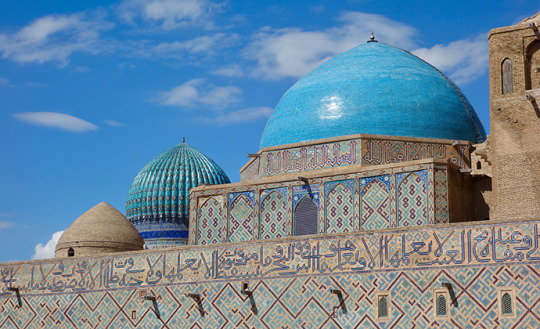
Ahmed Yasavi (1093-1166); one of the greatest mystics of the Turanian world at the crossroads between Tengrism and Islam
Divan-i Ḥikmet (the Book of Wisdom, Chagatai Turkic with Kipchak elements: ديوان حكمت); acknowledged as the Turkic Quran – pretty much like the illustrious Shahnameh of Ferdowsi, which is known as the Iranian Quran.
Ahmed Yasavi Mausoleum in Turkistan, Kazakhstan; built like the Arystan Bab Mausoleum (in honor of another 12th c mystic) by Timur (Tamerlane), the Islamic World Greatest Conqueror and Emperor in the late 13th c.
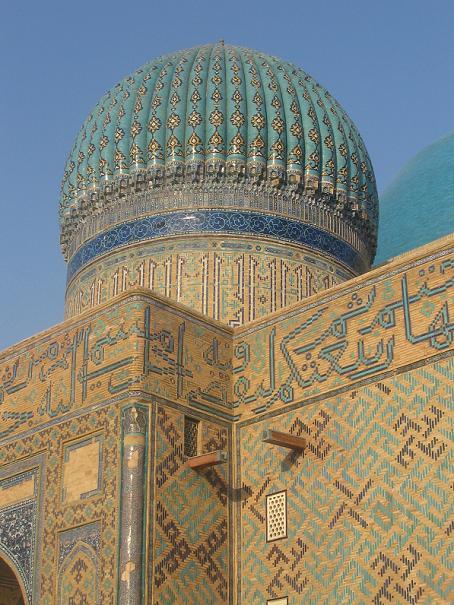
The Incredible Story of Divan-i Ḥikmet
"Divan-i Ḥikmet" is not only a monument of the religious Sufi literature; it is one of the most ancient monuments written in the Turkic language. Many researchers of the Turkic culture consider that it may be referred to the Karakhanid literature tradition. The sources of these poems are found also in the shaman songs of the Turkic nomads. The language of the monument contains the Kipchak elements. The famous "Divan-i Ḥikmet" is the common heritage of the Turkic people; the poems were handed down by word of mouth, from generation to generation, called upon people to honesty, justice, friendliness and patience.
The historic papers testify to the fact that "Ḥikmet" have been re-written many a time, edited, revised. The manuscripts of "Divan-i Ḥikmet" are kept mainly in the libraries of Tashkent, St. Petersburg, and Istanbul. In the depository of the St. Petersburg department of the Institute for Oriental Studies of the Russian Academy of Sciences there are 23 lists of "Divan-i Ḥikmet" that are referred to the XVIII-XIX centuries. The Tashkent lists are kept in the collection of manuscripts belonging to the Institute for Oriental Studies of the Academy of Sciences of Uzbekistan, in the Institute of Manuscripts (56 copies). These copies are mainly referred to the XIX century.
In addition to the manuscripts in Kazan city the poems of Hojja Ahmed Yasavi were published in the Arab graphic. The most complete edition contains 149 "Ḥikmets" of 1896, 1905. Currently "Ḥikmets" are survived in many lists. At different periods the scientists investigated life and creative work of Hojja Ahmed Yasavi, devoted articles to the genial poet and philosopher. During recent decades "Divan-i Ḥikmet" were re-edited several times both in our country and abroad.
This work summarizes the main provisions of the Yasavi Tarika (mystical school). Ḥikmets preached Islam and contributed to further dissemination of Islam among people. Turkic speaking nations named "Divan-i Ḥikmet" as "Korani Turki" as notably they grasped Koran through "Ḥikmets" of Hojja Ahmed Yasavi, so Turks began to name Hojja Ahmed as "Hazret Sultan" - "Holy Sultan", and Turkistan as the second Mecca.
Ḥikmets of Hojja Ahmed Yasavi both preached Islam and called upon Turkic nations to a spiritual unity, sovereignty, stipulated for all necessary conditions to achieve these aims.
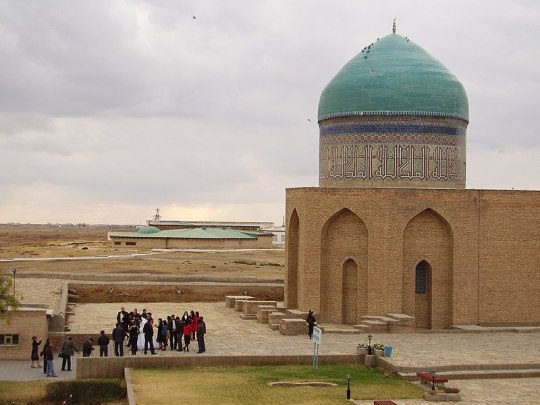
---------------
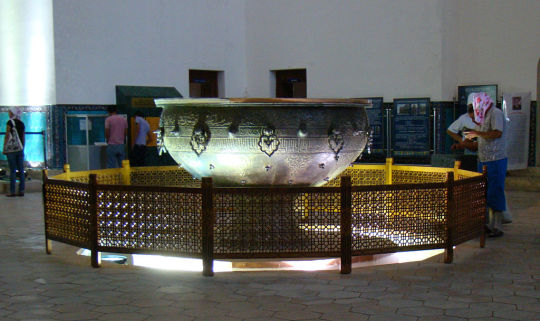
Hojja Ahmed Yasavi (died 1166) was a philosopher, Sufi mystic, and the earliest known poet to write in a Turkic dialect. He was born in the city of Isfijab (present-day Sayram, in Kazakhstan) but lived most of his life in Turkestan (also in southern Kazakhstan). He was a student of Arslan Baba, a well-known preacher of Islam. At a time when Farsi dominated literature and public life, Hojja Ahmed Yasavi wrote in his native Old Turkic (Chagatai) language. Yasavi's Divan-i Ḥikmet (Book of wisdom) is not just a religious relic of Sufi literature; it is also one of the oldest written works in the Turkic language. Yasavi begins with many elements of the shamanistic songs of Turkic nomads, then endows his poems, like all Sufi poetry, with many-layered meanings from the simple to the esoteric and infuses them with the spirit of Islam. Experts have suggested that the Divan has links to both the Chinese-influenced Karakhanid literary tradition and to the literature of the Kipchak of the Eurasian steppe. Divan-i Ḥikmet was long handed down by word of mouth. The printed edition presented here was published in 1904 by the Lithographic Printing House of the Kazan Imperial University. Kazan University was founded by Tsar Alexander I in 1804 and became the premier center for oriental studies in the Russian Empire.

----------------------
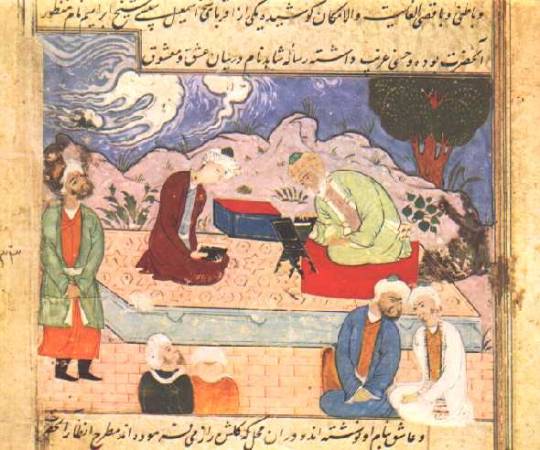
Selected Verses from Divan-i Ḥikmet in English Translation
For Muslims, my sagacity will be a teacher;
Whoever one may be, he must worship God.
My sagacious words speak only to those who understand.
Praising with prayers, immerse yourself in the Mercy of Allah.
Saying "Bismillahi ...", I will begin to say sagacious words,
distributing utterances like jewels and diamonds to students;
With tension in the soul, with grief in the heart, and with blood in my breath,
I open the pages of the legends "the Notebook of the Sledge".
I bless you all, who are thirsty for truth, unity,
and sincere conversations with kindred spirits.
May I be blessed (to meet) with the unfortunate and the destitute!
May I avoid those who are satiated with life or satisfied with themselves!
Wherever you see downcast leprous people, be gentle!
If such an unfortunate person is ignorant, share the secret knowledge with him,
in order to be closer to the Almighty on the Day of Judgment!
I ran away from the arrogant, the self-assured, and the proud people.
The Prophet knew the destitute, the unfortunate, and the orphaned people.
That night, he went out in the Miʿraj (Celestial Journey) to see (the Truth).
Ask, and sympathize with, the disadvantaged!
And I, too, decided to travel in the footsteps of the unfortunate.
If you are intelligent and wise, take care of the poor!
Like Mustafa (: prophet Muhammad), gather and take care of orphans everywhere!
From the greedy and mean, stay away!
Save yourself and become like a full-flowing river!
Turned into a callous, evil-tongued, and insidious being,
the false scholar, even when reading the Quran, does not do any good deed.
I have no fortune to allow to be wasted;
Fearing the wrath of God (lit. 'the wrath of Truth'), I am burning (although) without fire.
Pleasing the defenseless, the destitute and the orphans,
give (them what they need), respect them, and lighten their souls!
You will earn bread with hard work; with pure soul (true) humans come;
having heard these words from the Almighty, I convey them to you.
If one man does follow the tradition and does not believe, he will perish;
from callous and evil-tongued people Allah turns away;
in the Name of Allah, the Hell is prepared for them.
Having heard these words from the Blood of Allah (: Imam Hussein), I convey them to you.
Having adopted the rules of the tradition, I became a true believer;
having descended under the Earth alone, I received an insight;
I saw a lot of worshipers of the Lord and I understood;
I cut off sinful joys and pleasures - with a dagger.
Sinful feelings led people astray and destroyed them;
they forced people to put on airs in front of the common people, and then humiliated them.
They (: sinful feelings) did not allow people to read prayers and spells; people with sinful feelings made friends with the demons.
I forced myself to move away, piercing my flesh with the tip of a dagger (metaphorically said about the author's effort to move away from sinful feelings).
Those who are thirsty for radiant glory are mediocre slaves;
(contrarily,) the innocent people force themselves to behave humbly;
tombs of saints, verses of the Quran, hadiths are nonsense for those thirsty for glory.
Therefore, I drown myself in inescapable heavy grief (for the ignorant people).
In the spacious gardens of love for the Most High,
I want to be the nightingale that sings its sad songs at dawn;
In those hours, I want to see the radiant appearance
of my Allah, with the eyes of my heart.
Let the heart feed on love!
The body will be covered with clothes of happiness (: those suitable for prayers).
With the strength of love, I want to levitate,
and like a bird to descend on the branch of consciousness.
Until you taste the nectar of love,
until you put on the clothes of lovers (: those suitable for prayers),
until you gather faith and worship into one,
you will not be able to see the Divine Face of the Creator.
Help all people! Work like a slave!
Do good to unfortunate people!
If (Islamic times') scholars come, greet them with reverence while standing!
From mean people, there is no help.
The prophet always helped the poor and the crippled.
When you see the unfortunate, tears of sympathy (have to) flow.
It always hurts to see destitute and disabled people.
The handicapped persons' gratitude (for those who help them) is the highest recognition.
If you are a true believer, follow the path of the prophet to Allah!
If you hear their names, worship and praise them!
Try the fate of the destitute and unfortunate! Learn from them!
Become a support for the unfortunate and disabled! Understand them!
Oh, my Merciful Creator! Put me on the right path!
Enlighten me with your Mercy and Love!
Guide your erring servants on the right path!
This path is not possible without You.
To preach the Divine, a teacher is needed.
To this teacher, a reliable student is needed.
Working hard, they should earn the highest gratitude.
Such loving and devoted people will be marked by the Almighty.
People, who are in love with the Creator, have achieved their dreams.
Look! Do not disgrace yourself pretending to be in love!
Across the bridge named Sira ('life paradigm' of prophet Muhammad), which is thinner
and sharper than a sword's blade, liars will not pass into the Hereafter.
If you're in love (with God), love like this!
With the strength of your love, let the perfume reach people!
As soon as he hears the Name of Allah, he is ready for anything;
such a lover does not need earthly things.

------------------
Download the text as Word doc.:
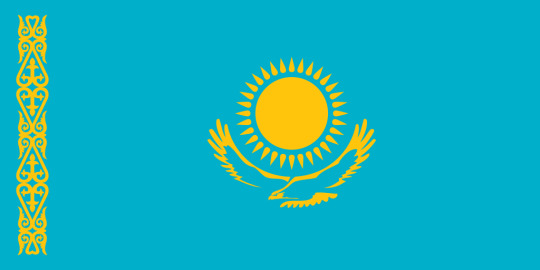
1 note
·
View note
Text
Türkistan - Türk dünyasının incisi
Ülkemizin her bölgesi kutsal mekânlar bakımından zengindir. Bu yerlerden biri Türkistan
Büyük şair Magzhan Zhumabaev'in söylediği gibi, "Tamasha Turkistandai zherde tugan, Turiktin Tuiri bergen nesibi koy ..." Bu dünyada doğan her Kazak ruhani açıdan zengin olmalıdır. İkinci Mekke lakaplı bu bölge her yıl diğer ülkelerden gelen turist kalabalığını kendine çekiyor.
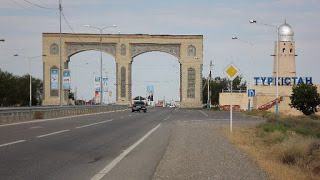
Türkistan'a ilk ziyaretim 2014'teydi. Türkistan'a tarih öğretmenim ve okul arkadaşlarımla gittim.Şimdi ben Türkistan'la ilgili gördüklerimi ve duyduklarımı sizinle paylaşmak istiyorum.
***********
Kazakistan'ın aşırı güneyindeki kurak bozkırların ortasında yer alan Türkistan şehri, turizm endüstrisinin tarihinin gerçek bir armağanıdır. Komşu Özbekistan'ın Büyük İpek Yolu üzerinde uygun ölçekte ve ihtişamlı manzaralara sahip bir sürü şehri varken, Kazakistan ticaret yollarının kenarında kalmış ve özellikle uzun bir geçmişi olan yerleşim yerleriyle övünmüyor. Türkistan mutlu bir istisnadır. Bugün 1500 yıllık tarihe sahip olan bu şehir, Orta Asya'daki en önemli Müslüman hac merkezlerinden biridir ve Tamerlane tarafından yaptırılan Sufi şair Hoca Ahmed Yasawi'nin türbesi de önemli bir turistik cazibe merkezidir.
Türkistan'a Nasıl Gidilir
Türkistan'a en yakın ana ulaşım merkezi - Çimkent - 180 km uzaklıktadır. Almatı veya Astana'dan uçakla Çimkent'e gidebilir, daha sonra yaklaşık üç saat boyunca Türkistan'a gitmeniz gereken bir otobüs veya taksiye geçebilirsiniz. Ayrıca, Kazakistan ve Türkistan'ın büyük şehirleri, doğrudan Astana ile demiryolu iletişimi ile bağlantılıdır ve Alma-Ata'dan ayrılırken, Çimkent'te bir transfer gerekecektir.
Ve şehrin kendisinde, Türkistan sokaklarında hızla koşan ve bir el sallamayla duran belediye otobüsleri ve minibüslerle dolaşabilirsiniz. İnmek için sürücüyü durma konusunda önceden uyarmalısınız - her şey Rusya'daki gibi. Aradığınız yerin tam adresini bilmiyorsanız, en yakın ilgi noktasını belirtin.
Tarih
Yassı şehri (bu Türkistan'ın eski adıdır), Buhara, Semerkant ve Hiva'dan kuzeye giden kervan yollarının kesiştiği noktada 500 civarında kurulmuştur. Orta Çağ'da, Orta Asya'nın en iyi güçlendirilmiş müstahkem şehirlerinden biri haline geldi. Ancak 12. yüzyılda, Sufi şair ve filozof Hoca Ahmed Yasawi'nin buraya yerleşmesiyle Türkistan'a gerçek şöhret geldi. Özel bir İslam felsefesini vaaz etti.Yasavi'nin anısı büyük Tamerlane tarafından ölümsüzleştirildi - 14. yüzyılın sonunda, kararnamesiyle burada muhteşem bir türbe ve yanında bir cami inşa edildi. Şehrin daha ileri konumu sadece güçlendi - 16-18 yüzyıllarda güçlü Khazan Hanlığı'nın başkenti olduğu ve bu da şehri Kazak hanlarının saygın mezarlarıyla zenginleştirdi.
Günümüzde Türkistan'a üç defa yapılan hac, Orta Asya Müslümanları arasında Mekke'ye yapılan Hac ile eşit olarak kabul edilmektedir.
Yasavi türbesinde, 18 metre çapında, Orta Asya'nın en büyük tuğla kubbesi ile örtülü merkez salon dahil toplam 36 oda bulunmaktadır.
Türkistan hava durumu

Türkistan'da (ve genel olarak Güney Kazakistan bölgesinde) yıl boyunca güçlü sıcaklık dalgalanmalarıyla ılıman bir çöl iklimi hüküm sürmektedir. Kışın çoğunlukla -5 .. -7 ° C'dir, ancak bazen sıcaklık -15 ° C'ye düşer. Yazın, termometre +30 ° C'de güvenle saklanır ve genellikle +40 ° C'ye kadar sürünür. Türkistan'ı ziyaret etmek için en uygun zaman Mart - Haziran ve Eylül - Kasım arasıdır.
Türkistan Otelleri
İnsanlar genellikle bir günlük bir geziyle Türkistan'a gelirler ve hatta birkaç günlük bir tur kapsamında şehri ziyaret edenler bile geceyi kural olarak başka şehirlerde geçirirler. Yine de gelecek vadeden "Eden" adı altında oldukça güzel bir otel var. Konaklama gecelik 50-70 Euro'ya mal olacak.
Türkistan'ın eğlence ve manzaraları
Hoca Türbesi Ahmed Yasawi
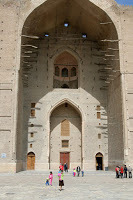
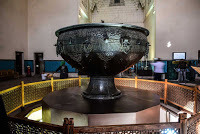
Hoca türbesinin muhteşem kompleksi Ahmed Yasavi, Türkistan'ın ana cazibe merkezidir. Timur tarafından bu ortaçağ Sufi şairinin ihtişamına göre inşa edilmiş, planda 46 x 65 metre ölçülerinde devasa bir dikdörtgen kaplıyor. Burada, 18 metre çapında, Orta Asya'nın en büyük tuğla kubbesiyle örtülü merkez salon dahil 36 oda ve orta kısımdaki türbenin yüksekliği 44 metredir.İçeride, yedi metal alaşımından yapılmış, yaklaşık 3 metre çapında ve iki ton ağırlığında büyük bir ritüel su kabı mutlaka görmelisiniz.
Arystan-baba türbesi
Türkistan'daki bir diğer önemli İslami türbe, bir şekilde Yasavi'nin “selefi” olan Aziz Arystan Baba'nın dinlenme yeridir. Efsaneye göre, Hz.Muhammed tespihini Arystan Baba'ya vermiş ve o da onları genç Yasavi'ye sunmuştur. Bu azizin mezarına ek olarak, burada Kuran'ın şaşırtıcı bir örneğini görebilirsiniz - camın altında sergileniyor.
Efsaneye göre, Tamerlane, Hoca'nın türbesini inşa etmeye başladığında Ahmed Yasawi, yapı gizemli bir şekilde birkaç kez yıkıldı. Bundan sonra, Tamerlane, önce Arystan Baba için bir türbe inşa etmesini ve ancak o zaman Yasavi'nin anısına bakmasını emrettiği bir rüya gördü. O da öyle yaptı - ve aynı nedenle, hacılar türbeleri bu sırayla ziyaret ettiler.
Türkistan'ın tarihi merkezi aynı zamanda diğer birçok İslami esere de ev sahipliği yapmaktadır. Yer altı camisi Khilvet (12. yüzyıl), 18. yüzyıla ait "Zhuma Camii" Müzesi, Doğu Hamamı Müzesi , Arkeoloji ve Etnografya Müzesi, Rabia Sultan Begim Müze-türbesi (15 c) ve "Türkistan Caddesi" Müzesidir.
0 notes
Text
Türkistan – İstanbul arası direkt uçuşların bilet satışları başladı https://ift.tt/3el9BPY
Kazakistan’ın düşük maliyetli havayolu FlyArystan, Türkistan’dan İstanbul’a ilk dış hat uçuşunun satışlarının başladığını duyurmaktan mutluluk duyar. Tek yön ücreti Türkiye çıkışlı yolcular için 79 Euro’dan, Kazakistan çıkışlı uçuşlarda ise 39.999 Tenge’den başlıyor. Biletler FlyArystan mobil uygulaması ve flyarystan.com üzerinden alınabilir.
Kazakistan’ın ruhani başkentine İstanbul’dan düzenli uçuşlar 21 Mart 2021’de başlayacak. Uçuşlar cuma ve pazar günleri haftada 2 kez gerçekleştirilecek. Türkistan’dan uçuşlar, yerel saatte ile 08:40’ta kalkış, İstanbul’a 10:35’te varış olarak düzenlenmiş olup dönüş uçağı da yerel saatle 11: 20’de kalkış ve 18:25’te Türkistan’a varış olarak planlanmıştır.
FlyArystan Uçuş Planlama ve Gelirlerden Sorumlu Müdürü Renat Abulkhanov yaptığı açıklamada “Kazakistan ile Türkiye çok yakın iki ülkedir. İstanbul ile Türkistan arasında direkt uçuşların bu bağlantıyı daha da güçlendireceğinden eminiz. Türkistan bölgesi eşsiz mimari güzelliklerle dolu zengin bir tarihe sahiptir. Türkistan’ın başlıca ilgi noktası, Kazakistan’ın manevi başkenti olması ve Emir Timur tarafından yaptırılan Hoca Ahmet Yasavi’nin türbesinin bu coğrayada bulunmasındandır. Türkistan bölgesinde aynı zamanda Emir Timur tarafından yaptırılan öğretmen Yasavi Arystan babanın mozolesi ile Otyrar ve Sauron antik yerleşim yerleri bulunmaktadır. Daha fazla uçağın filoya katılmasıyla artık yurtiçi düşük ücretli ağına uluslararası varış noktaları eklenebileceği anlamına gelmektedir. Düşük tarifeli havayolu olarak, Almatı ve Nur-Sultan gibi önemli havalimanları yerine alternatif havalimanlarına direkt uçuşların geliştirilmesini hedeflemekteyiz. Sınırların kademeli olarak yeniden açılmasıyla, FlyArystan olarak uçuş ağımıza daha fazla yeni rotayı eklemeyi umuyoruz. Uygun fiyatlarla uçuş gerçekleştirmek isteyen büyük kitlelerin farkındayız’’ dedi.
FlyArystan, Türkistan’a uçan ilk havayoludur. Şu an kente Almatı, Nur-Sultan ve Atyrav’dan düzenli uçuşlar gerçekleştirilmektedir. Bu yeni rotayla, havayolumuzun 19 iç hat rotasından oluşan mevcut ağını tamamlayarak yolcuların Kazakistan’ın her yerine çok düşük ücretlerle uçmasına olanak sağlanması hedeflenmektedir.
The post Türkistan – İstanbul arası direkt uçuşların bilet satışları başladı first appeared on Aeroportist I Güncel Havacılık Haberleri.
from Aeroportist I Güncel Havacılık Haberleri https://ift.tt/2O3Hx91 via IFTTT
0 notes
Text
EL ÁNGEL DE SIBERIA: SEMYON REMEZOV Y LA GEOGRAFÍA SAGRADA DE LA RUSIA TRANS-URAL

Alexander Bovdunov
Traducción de Juan Gabriel Caro Rivera
Informe del seminario "Geografía sagrada de Rusia"
Siberia era conocida por los rusos antes de la campaña de Yermak. Los antiguos novgorodianos comerciaron con Ugra (la Ob del Medio) e incluso enviaron expediciones militares allí. En 1483-84, los gobernadores de Ivan III, Fyodor Kurbsky-Cherny e Ivan Saltyk-Travin hicieron una expedición contra el príncipe Vogul (Mansi) Pelymsky, y luego recorrieron las tierras de Khanty: "Caminamos por el río Irtysh, luchando, pero al llegar al río Ob ... lo vieron como algo bueno y completo".
Una nueva página en la historia comenzó con la campaña de Yermak en los años de 1581(82)-1585. Ya al año siguiente de la muerte del atamán, los gobernadores del Zar fundaron la primera ciudad rusa de Siberia-Tyumen (en el sitio del asentamiento Chingi-Tura), y un año después - Tobolsk.
La Sagrada Conquista y Sucesión
Ya al menos en el siglo XVII, podemos decir que la conquista de Siberia fue considerada por los habitantes rusos como un acontecimiento sagrado. El primer arzobispo de Tobolsk, Cipriano, ordenó en todas las iglesias dar "memoria eterna" a Yermak y sus cosacos como mártires de la fe cristiana. Uno de los primeros historiadores de Siberia, el secretario Savva Yesipov, consideró este evento como parte de la providencia de Dios. Sin embargo, la figura de Yermak adquiere una personalidad muy especial con Semyon Ulyanovich Remezov, el Leonardo da Vinci de Siberia: cartógrafo, arquitecto, artista e historiador de finales del siglo XVII y principios del XVIII.
En esta sorprendente figura, la Rusia de Moscú y la Rusia de Petersburgo están unidas. Por un lado, crea en el marco de la antigua tradición cartográfica, crea mapas principalmente con una orientación hacia el Sur, hace referencia a muestras de literatura cotidiana e imágenes de antiguas miniaturas rusas. Incluso ubicando, aunque fuera del mapa, el Paraíso. En la página 150 - "El reino de China desde la ciudad y desde este tramo hasta el Paraíso".
Por otro lado, se refiere a modelos barrocos de retórica y menciona a Jacob, el astrólogo inglés, Jacob Bruce.
En la Crónica de Remezov, Yermak aparece como un hombre verdaderamente santo. El autor utiliza deliberadamente los caminos de la literatura cotidiana rusa. Yermak habla con Dios, las victorias rusas se dan con intervención divina. Al mismo tiempo, Yermak es para Remezov la imagen de un gobernante ideal: "valiente, inteligente, humano, transparente y feliz con mucha sabiduría".
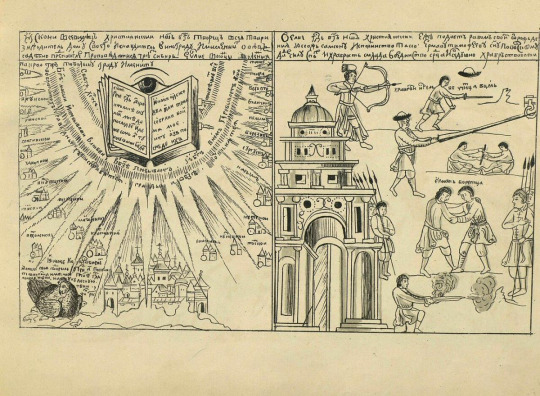
Es interesante que Remezov transmita una historia sobre el cuerpo de Yermak, escuchada de su padre, Ulyan Remezov, de Ablai Girey, un descendiente de Kuchum Khan.
Esta es la historia de que después de la muerte del Atamán, los tártaros que descubrieron su cuerpo descubrieron que era incorruptible, y milagros y curaciones eran producidos por su cuerpo, sus vestidos y armadura. Ablai Giray dijo que Yermak fue enterrado cerca del pueblo de Baishevo.
“Tu Yermak yaces en el cementerio de Baishevsky debajo de un árbol de pino, y en los días de tus padres una columna de fuego sobre él [Yermak], y en otros [días], una vela que aparece a los tártaros, pero no a los rusos".
Es curioso que el Baishevskaya Astana se encuentre en este lugar, donde está enterrado el santo sufí Hakim-Ata (se cree que Suleiman Bakyrgani se considera bajo este nombre: kubdt kubdtov, un santo sufí del siglo XII, popular en el Islam Sufi turco, el cuarto califa del tariqah Yasavi). Unos pocos lugares más reclaman ser la tumba de este santo.
Fue el cuarto califa (virrey) del sufi tariqah Yasaviy, y es considerado el autor de Akhir Zaman Kitabi, una versión islámica del Apocalipsis. Este es uno de los lugares más venerados, si no el más venerado de los musulmanes siberianos. Según algunos informes, la peregrinación allí incluso equivalía a una peregrinación a La Meca.
Es interesante que en esta leyenda el conquistador de los tártaros Yermak sea interpretado por ellos como un santo. Se produce una inversión peculiar de la imagen, una persona que viene por la guerra se convierte en un defensor. La curación proviene de su cuerpo y armadura, si Ablai Khan no toma la tierra de su tumba, entonces no tendrá éxito en la guerra, y finalmente el cuerpo de Yermak está enterrado en el lugar más sagrado para los musulmanes, el polo sufí de la tierra de Siberia.
La figura de Yermak aparece paradójicamente como un puente entre los rusos y tártaros, cristianos y musulmanes, el cuerpo sagrado, por así decirlo, conecta dos mundos, dos geografías sagradas.
Curiosamente, esta intención de síntesis se manifiesta en otro personaje ruso que vivió en Siberia: la figura del monje Dalmat Iset. Nacido en 1594, fue uno de los primeros siberianos rusos, hijo de un cosaco y una mujer tártara. Después de un largo servicio militar ya en su edad adulta, se convirtió en monje y se fue al sur a orillas del río Iset y volverse eremita. Ese lugar era la ciudad de Tyumen del tártaro Ilighey.
Es interesante que los rusos que estaban atrapados allí se rebelen contra el monje, que instan a Ilighey a matarlo. Sin embargo, el asesinato no ocurre, primero resulta que Dalmat es un pariente de Ilighey por madre. Y luego, cuando Ilighey todavía decide cometer el crimen, la misma Madre de Dios se le aparece y exige que el staretz (anciano) reciba la posesión de toda la tierra circundante. Así es como se describió este episodio en la tumba del anciano:
"Con el sueño de Elijah como un martillo,
Aplastado, por la confesión en apasionada ante el Dálmata:
Tu al profeta de la Gran Madre
Entregue todo tu patrimonio
Te esta prohibido no solo el no matarle,
Pero debajo de tu palabra tu débil honor hace daño.
Su vista es un rayo, una túnica escarlata.
Y en toda su gloria, está la Gran Reina".
Después de eso, Ilighey le da a Dalmat su shishak (casco) y su cota de malla.
Curiosamente, una tradición posterior pareció poner este casco cuando fue reclutado antes de ser enviado al ejército. El monje Dalmatius fue considerado su santo patrón y el defensor de los militares. Como en el caso de Yermak, el cuerpo de un soldado ruso le da poder militar a los tártaros, como en el caso del casco de Ilighey, la armadura tártara (al menos simbólicamente) protege a los soldados rusos, y la tierra pasa por el patrocinio de la Virgen a los monjes ortodoxos.
El simbolismo de la sucesión y la Nueva Jerusalén
Es significativo que después de la conquista de Siberia, los rusos continuaron usando esta palabra en la designación del área geográfica del antiguo Kanato de Siberia, incluso expandiendo sus fronteras a medida que avanzaban hacia el Este. El escudo de armas del Reino de Siberia se encontraba en el pequeño escudo de armas del Imperio ruso, junto con los escudos de los reinos de Astrakán, Kazán, Georgia y el Reino de Taúrico Chersonesos.
Es significativo que los cronistas rusos hicieron todo lo posible para enfatizar la continuidad de la Siberia rusa de la no rusa. En particular, a través del simbolismo de la sucesión de Tobolsk a Kashlyku o Isker (la ciudad también podría llamarse con la misma palabra para Siberia). Afortunadamente, Tobolsk se fundó al lado del lugar donde se encontraba Isker.
Como Savva Esipov escribió sobre esto:
“En 7095 [1587], durante el reinado del Piadoso Soberano, el Zar y gran duque Fedor Ivanovich de toda Rusia, de acuerdo con la voluntad del Zar, se envió de Gosudarev al gobernador de Moscú Danil Chulkov con un gran ejército. Según la orden del Soberano, llegaron al río Irtysh a diez millas de la ciudad de Siberia; estaba complacido de iluminar esta tierra para la gloria del Padre, el Hijo y el Espíritu Santo. Ella reemplazó a Siberia como la ciudad principal. Tobolsk estaba a cargo, ya que fue aquí donde se llevó a cabo la conquista de los condenados ateos, y así tomó el lugar de Siberia como la ciudad del gobernante".
La semántica de Semyon Remezov de "conquistar a los ateos" nuevamente da paso al deseo de síntesis. En la Breve crónica siberiana (Kungurskaya), describe cómo los tártaros observaron a lo largo de los siglos "en el lugar actual de Tobolsk, con su catedral y su campanario, la imagen de una ciudad cristiana radiante que se eleva sobre el suelo con iglesias y una gran campana sonando".
La Siberia no rusa se anticipa a la rusa, cuya imagen del centro coincide en semántica con la imagen de la Nueva Jerusalén.

Curiosamente, para Remezov, Siberia es equivalente al universo, y Tobolsk se compara con Jerusalén como el centro del mundo.
Entonces, escribió: "En relación con el centro del mundo, la ciudad de Jerusalén, Tobolsk se encuentra más cerca de los países fríos, más cerca del Norte, en la estepa... El planeta celestial, bajo el sol, florece con felicidad y belleza".
En uno de los mapas de Remezov, "Tobolsk estaba inequívocamente ubicado en el centro del mundo, con círculos concéntricos divergentes de acuerdo con la tradición cartográfica con respecto a Jerusalén".
Remezov incluso le da a Siberia su propia cronología. En la "Descripción de los pueblos de Siberia y los rostros de sus tierras" que "fue escrito por la orden del gran Soberano por su sirviente de Tobolsky, Semen Ulyanovich Remezov, 7206 desde el nacimiento de Adán, 1698 desde el nacimiento de Cristo, 118 desde la captura de Siberia". La captura de Siberia está a la par con la creación del hombre y la Natividad. Según Remezov, la predicación del evangelio en Siberia es el plan de Dios "desde el principio de los tiempos":
Para los siberianos y Semyon Remezov, lo que para el resto es la periferia se convierte en un centro, casi el centro del mundo.
Es significativo que Remezov considere a Siberia como tierra pura, comparada con el cielo y el firmamento. Siberia, en su opinión, está lejos de las "bellezas de las montañas terrenales, como el cielo de la tierra al tomar el camino de la rectitud".
El simbolismo de la portada del "Libro orográfico" de Remezov es interesante, donde se mezclan las imágenes de la antigua miniatura rusa tradicional y el arte europeo (posiblemente esoterismo europeo) de esa época.
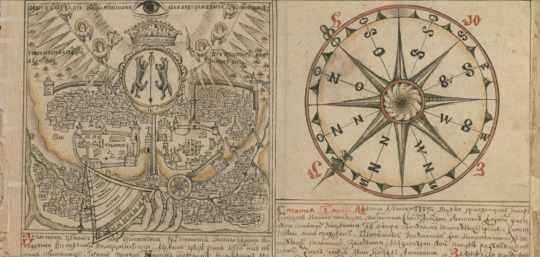
En la columna de la izquierda hay una figura con escalas: se llama la "Verdad". A la izquierda hay una mujer coronada con un hijo: se llama "Amor", más cerca del centro: la "Fe" con una cruz y otra figura coronada la "Esperanza".

Rico es el simbolismo y el plano del Tobolsk en el mismo libro.
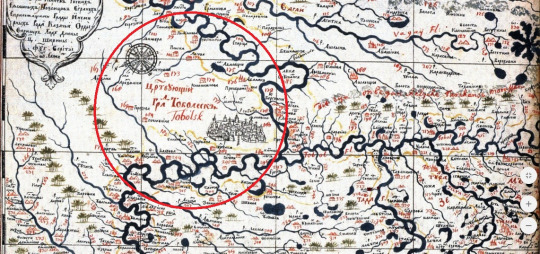
En el "Libro de dibujo de Siberia”, Remezov denota de manera especial la ciudad: La ciudad reinante de Tobolesk".
Sofía, el ángel y la virgen
Para comprender la geografía sagrada de Siberia, siempre hay que tener en cuenta una conexión especial de esta región con el Norte ruso y Novgorod. Fueron los novgorodianos quienes comenzaron a explorar Siberia. Y fueron los habitantes del Norte ruso, junto con los cosacos, quienes formaron la primera ola de inmigrantes, la base de los antiguos residentes de Siberia.
La comunicación con Novgorod arroja un puente hacia la antigua Rusia y llama la atención sobre la centralidad de la imagen de Sofía. La catedral principal de Tobolsk es Santa Sofía, como en Kiev y Novgorod. El metropolita Cipriano construyó la primera catedral de madera de Santa Sofía que es la imagen de la catedral de Novgorod. Él llevó esto a Tobolsk y algunos santuarios de Novgorod.
Es significativo que el templo principal en Siberia sea Hagia Sophia, originalmente construida según el modelo de Novgorod. A finales del siglo XVII y principios del siglo XVIII, con los obispos de los pequeños rusos (ucranianos), la Catedral de Sofía permanece, pero ya se está construyendo según los modelos de la pequeña rusia, que se asemeja a la Catedral de Sofía en Kiev. Por lo tanto, la Sofía de Tobolsk está asociada con dos templos icónicos de la antigua Rusia.

Es interesante que durante la construcción de la versión actual de la Catedral de Santa Sofía, la de piedra, se plasmó el icono "Plantando el árbol siberiano (Sofía, la sabiduría de Dios)", que también se considera creado por Remezov.
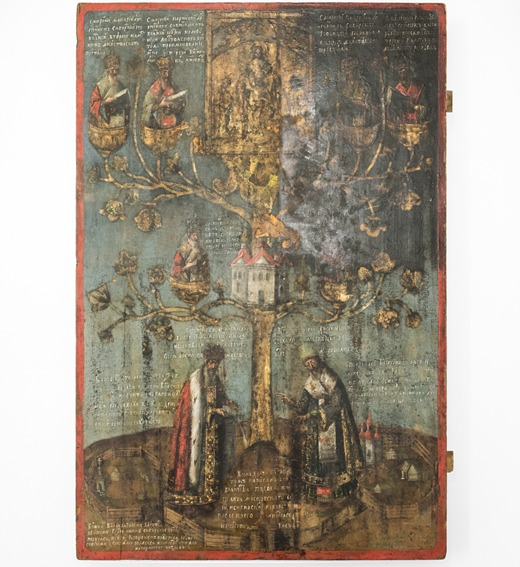
Un árbol se encuentra en el centro de la composición; el Zar Iván el Terrible y el Metropolita Dionisio de Moscú están representados en sus raíces, durante las cuales tuvo lugar la campaña de Yermak; en las ramas hay cuencos con figuras de los primeros seis obispos siberianos.
Sobre el árbol hay un icono que representa a Santa Sofía, Cristo, Nuestra Señora y Juan el Bautista.
En el "Libro de dibujos de los servicios" de Semyon Remezov, se encuentran además mapas y varias obras literarias. Entre ellos está "Comparación entre los países siberianos con el pacífico ángel de la guarda (stalt, personal)".
Remezov elogia poéticamente a Siberia y señala que su belleza y pureza solo se puede comparar con un ángel.
"Ahora, donde Dios ha estado desde el principio es es Siberia, y si es tierra musulmana, primero fue para la conveniencia cristiana la Siberia que es un ángel pacífico" –
Al mismo tiempo, este es un ángel muy inusual. Partes del ángel se corresponden con ciertos lugares geográficos, por ejemplo, Tyumen y Tomsk, sus dos hombros. Tobolsk es el corazón y "todo lo interno está en todo", dentro de Tobolsk. Al mismo tiempo, la cara del ángel se correlaciona con la posición de la fe ortodoxa, y "La Cabeza de Siberia es una conveniencia pacífica para que el Dios eterno sea la cabeza de todo, el Todopoderoso inquieto y futuro".
Y verdaderamente corto y preciso - "arco de bulatny - genio siberiano".
"Así como un ángel sirve a Dios en su ausencia, así los siberianos", escribe Remezov, "los enemigos del Zar están luchando, limpiando la tierra con su sangre".
Tobolsk compara a Remezov con un ángel:
“Similar a la notoria ciudad inicial de Tobolsk, en Siberia, a un ángel con su nombre, un liceo avistado al Oeste: una barricada que lleva a una pequeña colina con su bazar del reino ruso.
La Iglesia del Representante de Siberia, el gran estrato de Dmitry Solunsky, la cabeza, iluminada por el resplandor de la luz.
El brazo desinfectante que lo limpia todo. Por un lado, la región del bajo Posad que posee todo tipo de suministros y recursos.
En la otra mano esta la Catedral de la Iglesia y el muro de piedra.
En Percy existe el comercio y la reunión de personas...
En el ala derecha - Tobol y la estepa, a la izquierda - el Irtysh se apoya allí...
Este ángel es en su conjunto Siberia, la amante y un adorno enorme, y el exterior está lleno de paz y silencio.
Está vestido de luz brillante, un amurallado con las enseñanzas del evangelio..."
Como señala una investigadora estadounidense de Remezova, Valerie Quelson:
“La presencia angelical, según Remezov, se siente en todo lo que es ordenado, pacífico y subordinado al principio más elevado, divino y terrenal, lo que implica que estas autoridades deben ser ortodoxas y rusas. Los ángeles pueblan de forma aparente y tangible las calles ordenadas, los mercados y las plazas de Tobolsk”.
Curiosamente, en Tobolsk hay una leyenda sobre la mano de un ángel. En el otoño de 1620, cuando el recién nombrado Arzobispo de Tobolsk y el moje siberiano Cipriano fueron a Tobolsk. Bajo el monótono balanceo del carro, Cipriano se quedó dormido.
"Y en un sueño se le apareció un ángel de Dios, que cubrió la ciudad baja con su palma luminosa y ordenó construir las iglesias en el Bajo Posad para que todos lo repitieran". Se construyeron siete iglesias en los contornos de esta palma:
· Exaltación de la Santa Cruz,
· La Pyatnitskaya
· La Navidad
· La Anunciación,
· La Iglesia de Zacarías y Elizabeth,
· La Iglesia de San Miguel Arcángel,
· La Epifanía.
Otra imagen sagrada muy importante asociada con Siberia es la Virgen. Diferentes partes de la tierra rusa están asociadas con diferentes imágenes de la Madre de Dios. La primera y más venerada forma milagrosa de Siberia es el icono de Abalak "Signo" de la Madre de Dios, plasmado en 1637. Según la leyenda, apareció en un sueño a la viuda María del asentamiento tártaro de Abalak, a 30 km de Tobolsk. Además, el ícono, que se conservó solo en reproducciones, pues el original se perdió durante la Guerra Civil en Rusia, era una reproducción del ícono del "Signo" de Novgorod, complementado por las imágenes de San Nicolás y St. María de Egipto. El autor de la leyenda sobre el ícono fue el empleado ya mencionado Savva Yesipov.
“Abalak también fue un lugar simbólico en tiempos paganos, y como saben, a menudo se erigieron nuevos templos en el sitio de los santuarios precristianos. La amada esposa de Kuchum Khan, Suzge vivió aquí, y la imagen de la Virgen de Abalak inmortalizó este lugar en la ortodoxia”, dice Irina Manuylova, investigadora del Museo de Bellas Artes de Tyumen.

Con el icono de Abalak, Siberia fue inscrita en el espacio de la Madre de Dios de Rusia. Al mismo tiempo, vemos la imagen de la Virgen María exigiendo entregar la tierra a Dalmatius Iset. El desarrollo de Siberia por parte de los rusos se conceptualiza en los paradigmas de la historia sagrada y la geografía sagrada.
Siberia es una continuación del espacio sagrado del norte ruso, a través de la imagen de Hagia Sophia conectada con la antigua Rusia, un paraíso y un país puro, la herencia de la Virgen, un ángel de pureza y luz, su ciudad y capital, se correlaciona con la Nueva Jerusalén, y la geografía sagrada de la población indígena se entrelaza con la geografía sagrada de los rusos.
Materiales usados:
Ремезов С.У. «Хорографическая книга».
Ремезов С.У. «Чертёжная книга Сибири»
Дергачёва-Скоп. Е.И. "Похвала" Сибири С.У. Ремезова.- https://docplayer.ru/39272247-E-i-dergacheva-skop-pohvala-sibiri-s-u-remezova.html
Сьюзан Смит-Питер. С.У. Ремезов и сибирская идентичность в конце XVII-начале XVIII века. http://journals.tsu.ru/engine/download.php?id=42401&area=files
Valerie A. Kivelson. Angels in Tobolsk: Celestial Topography and Visionary Administration in Late Muscovite Siberia// Harvard Ukrainian Studies Vol. 28, No. 1/4, RUS' WRIT LARGE: LANGUAGES, HISTORIES, CULTURES: Essays Presented in Honor of Michael S. Flier on His Sixty-Fifth Birthday (2006), pp. 543-556
Шумейко. И. В XVII веке точно было известно, что Рай находится возле Австралии//Независимая Газета. - https://www.ng.ru/science/2014-05-28/15_remezov.html
Появлению Абалакской иконы сибиряки обязаны новгородцам, считают искусствоведы. ИА "Тюменская Линия" - https://t-l.ru/199966.html
Легенда о ладони ангела. https://tobolsk.admtyumen.ru/mo/Tobolsk/about_OMSU/tourism/more.htm?id=10937397@cmsArticle
Кожушко С. Неизвестное Зауралье: легенды и были, загадки и тайны.
"...Уготовах ко всеутешной всенародной пользе...".Семён Ульянович Ремезов. - https://tobolsk.info/istoriya-tobolska/lyudi/29628-ugotovakh-ko-uteshnoj-vsenarodnoj-polze
Преподобный Далмат Исетский. https://dalmate.ru/istoriya-monastyrya/prepodobnyj-dalmat-isetskij.html
0 notes
Text
Nur-Sultan stay in Hilton Hilton Expo
First meeting with Minister of Culture and Sport of the Republic of Kazakhstan Ms. Aktoty Raimkulova whograduated from the Almaty State Conservatory named after Kurmangazy in the specialties “composition” and “piano”, postgraduate studies in the specialty “composition”.

She studied at the magistracy in the International Academy of Business in the specialty “Management”. Has titles: the DBA (Doctor of Business Administration) and Doctor of Art History on musicology and musical art. On October 3, 2016, by the Decree of the Government of the Republic of Kazakhstan was appointed as Vice Minister of Culture and Sports of the Republic of Kazakhstan. On June 17, 2019, by the Decree of the President of the Republic of Kazakhstan, she was appointed as Minister of Culture and Sports of the Republic of Kazakhstan.
Visit the Tower Astana-Bayterek that is a monument and observation tower in Nur-Sultan, the capital city of Kazakhstan. A tourist attraction popular with foreign visitors and native Kazakhs, it is emblematic of the city, which became capital of the country in 1997. The tower is located within on the Nurzhol Boulevard, and is considered a symbol of post-independence Kazakhstan.
Reception dinner with Chairman of the Committee for Foreign Affairs, Defense and Security of the Mazhlis Mr. Mukhtar Yerman at the “Vechnoe Nebo” restaurant.
Visit the EXPO 2017 site. Nur-Alem Pavilion and surroundings… The Kazakhstan Pavilion and Science Museum, known as Nur-Alem in the country, is the iconic, high-performing centerpiece of EXPO-2017, last year’s international exposition, which ran from June 10-September 10, 2017. The site is currently being transformed into a Post-Expo development with cultural facilities, an office and research park, and residential components that seeks to attract international entrepreneurs. Inspired by the EXPO-2017 theme, “Future Energy,” the Kazakhstan Pavilion and Science Museum embodies a futuristic design that is optimized to incorporate sustainable philosophies.
The epitome the EXPO-2017 theme “Future Energy,” is the exposition’s centerpiece, the Kazakhstan Pavilion and Science Museum, which seeks to educate visitors about our complex relationship with energy use.
The design team used Building Information Modeling (BIM) to explore multiple iterations of the design in a virtual space early in the design process. Each version was analyzed for design expression, energy impact, and structural integrity. The sphere’s complex design required close collaboration with the structural consultant for all opportunities for energy generation to be investigated, and several were incorporated into the building’s design.
Hilton Astana hotel – Lunch meeting – Welcome to Hilton Astana, a state-of-the-art hotel within the futuristic EXPO-2017 exhibition complex. Enjoy a high level of service while you’re here as well as thoughtful amenities like a wellness spa, rooftop bar, fitness center, indoor pool, Executive Lounge and extensive conference facilities. We’re within minutes of city center, corporate offices, Government of Kazakhstan departments and agencies, and Nursultan Nazarbayev International Airport (TSE).

HILTON ASTANA
SAURAN ST. 46, NUR-SULTAN, 01000-0, KAZAKHSTAN
TEL: +7-7172-649900 FAX: +7-7172-649901
Visit to Hazret Sultan Mosque. The Hazrat Sultan Mosque is a mosque in Nur-Sultan (formerly called Astana), Kazakhstan. It is the largest mosque in Central Asia.
After the suggestion from president of Kazakhstan Nursultan Nazarbayev mosque named “Hazret Sultan”, which means “Holy Sultan”. As well known, “Hazret Sultan” – one of the epithets of Sufi sheikh Khoja Ahmed Yasavi, author of “Divan-i Hikmet”, whose mausoleum is located in Turkistan.
Construction of the mosque “Hazret Sultan” started in Astana in June 2009. In different periods from 1000 to 1500 workers have been involved in the construction of the mosque. Hazret Sultan Mosque was opened on July 6, 2012 at 12:30, which supplemented the list of unique objects of the capital.
Nur-Sultan – Capital of Kazakhstan Nur-Sultan stay in Hilton Hilton Expo First meeting with Minister of Culture and Sport of the Republic of Kazakhstan Ms.
0 notes
Photo

إذا كنت ترغب في وجهه الكريم و تمتنع عن كل ما ليس هو، فاْفْنَ عن حياتك قبل موتك. الخوجة أحمد يسوي، ديوان الحكم If you desire His Face and reject all that it is not Him, Destroy your existence before you die. Khoja Ahmet Yasavi Dīvān-i Ḥikmet 📸 Registan in Samarkand, Uzbekistan (the Registan is a collection of medersas, islamic schools). مدارس رجستان بسمرقند، أوزبكستان، و هي مجموعة مدارس إسلامية. . . . . . . . . . . . . . . . . . #yasavi #yesevi #aşk #love #instagood #photooftheday #beautiful #happy #art #instadaily #follow #like4like #picoftheday #calligraphy #architecture #mawlid #muhammad #sufism #islam #spirituality #sama #sufipoetry #sufimusic #turkmen #uzbekistan #samarkand #registan #سماع #عشق #خط_عربي (à Samarkand Uzbezkistan) https://www.instagram.com/p/CHm8vTPBTMw/?igshid=9451vjhq170
#yasavi#yesevi#aşk#love#instagood#photooftheday#beautiful#happy#art#instadaily#follow#like4like#picoftheday#calligraphy#architecture#mawlid#muhammad#sufism#islam#spirituality#sama#sufipoetry#sufimusic#turkmen#uzbekistan#samarkand#registan#سماع#عشق#خط_عربي
3 notes
·
View notes
Photo

ON YOUR RELIGION
Throughout the dervish literature you will find us saying repeatedly that we are not concerned with your religion or even with the lack of it. How can this be reconciled with the fact that believers consider themselves the elect?
Man's refinement is the goal, and the inner teaching of all the faiths aims at this. In order to accomplish it, there is always a tradition handed down by a living chain of adepts, who select candidates to whom to impart this knowledge.
Among men of all kinds this teaching has been handed down. Because of our dedication to the essence, we have, in the Dervish Path, collected those people who are less concerned about externals, and thus kept pure, in secret, our capacity to continue the succession. In the dogmatic religions of the Jews, the Christians, the Zoroastrians, the Hindus and literalist Islam this precious thing has been lost.
We return this vital principle to all these religions, and this is why you will see so many Jews, Christians and others among my followers. The Jews say that we are the real Jews, the Christians, Christians.
It is only when you know the Higher Factor that you will know the true situation of the present religions and of unbelief itself. And unbelief itself is a religion with its own form of belief.
Ahmad Yasavi
The Way of the Sufi
New editions in Paperback, eBook, Audiobook. Also, a free online edition:
http://idriesshahfoundation.org/books/the-way-of-the-sufi/
1 note
·
View note
Photo

2/25/17 i missed the weekly sketch last week so here's this. i wanted to color it all before i remembered how much i hated inking. features yasavi and nora, ocs based off the golden quiche.
#rev draws#sketch#anime hair is real#i gotta reread the chapters#lucidia might be the week after next week
7 notes
·
View notes
Text
youtube
Dhikr by dervishes from Tariqa Halveti uşşaki, Istanbul, Turkey.
The poem is known as "On sekiz bin âleme server olan Muhammed", most famous sufi poetry from Khoja Ahmet Yasavi, great sufi master in turkmen lands
He was a 11th century poet Sufi scholar and an early Turkish mystic leader who exerted a powerful influence on the development of mystical sufi orders throughout the Turkish-speaking world in Asia and Europe.
حلقة ذكر لمريدين من الطريقة الخلواتية العشاقية, باسطنبول بتركيا.
القصيدة هي "محمد خادم ثمانية عشر ألف عالم" و هي من أشهر أشعار الخوجة أحمد ياسافي ،شيخ صوفي عظيم في أراضي تركمانستان.
كان شاعرًا و عالما متصوفا في القرن الحادي عشر، باحثًا وزعيمًا صوفيًا باللغة التركية، و كان له تأثير قوي على تطور و انتشار الطرق الصوفية في جميع أنحاء العالم الناطق باللغة التركية بآسيا و أوروبا.
#sama #sufimusic #dhikr #islam #sufism #yasavi #yesevi #yasawi #tariqa #halveti #halvetiussaki #turkey #turkmen #rumi #sufipoetry #poetry #music #art
#love #instagood #photooftheday #beautiful #happy #art #instadaily #follow #like4like #picoftheday #mawlid #muhammad #spirituality #kazakhstan
#محمد #المولد_النبوي #سماع #تصوف #اسلام #سماع_صوفي #موسيقى_صوفية #مولانا
#islam#sufism#love#spirituality#peace#photooftheday#beautiful#سماع#sufimusic#sufimuzik#dhikr#halveti#halveti ussaki#turkmen#turkey#Kazakhstan#Turkestan#yesevi#yasavi#yasawi#rumi#haci bektash#yasaviya#sufi poetry#poetry#sama#dervish#art#شعر صوفي#تصوف
2 notes
·
View notes
Photo

Rise up early, turn hardship into sweetness, Hold tight the hem of the master, Give your soul to the love of the Lord, Once given, true love clarifies. . Khoja Ahmet Yassawi, Pir-i Turkestan, sufi master of Turkmen world 📿 قم مبكرًا ، وحوِّل المشقة إلى عذوبة، تمسك بطرف الشيخ المربي، امنح روحك لمحبة رب العالمين، حالما تمنحها، يصبح الحب الحقيقي واضحا. . العلامة المتصوف الخوجة أحمد يسوي، الشيخ المربي لتركستان و العالم التركماني 📿
📸 Türkmen woman by Majid Rafieian @majid.gallery. سيدة تركمانية لمجید رفیعیان. 📿 #ahmet_yesevi #yasavi #yassawi #yesevi #Divani_hikmet #sufism #islam #bookofwisdom #turkestan #turkmen #tasawwuf #sufipoetry #sufimusic #samaa #love #spirituality #تصوف #اسلام #أحمد_يسوي #خوجة_يسوي #خوجة_أحمد_يسوي #تركمان #تركستان #شعر_صوفي #سماع_صوفي #سماع #ديوان_الحكمة #حب #عشق https://www.instagram.com/p/CGRk7MkBO8K/?igshid=z7xi0ljjtsm7
#ahmet_yesevi#yasavi#yassawi#yesevi#divani_hikmet#sufism#islam#bookofwisdom#turkestan#turkmen#tasawwuf#sufipoetry#sufimusic#samaa#love#spirituality#تصوف#اسلام#أحمد_يسوي#خوجة_يسوي#خوجة_أحمد_يسوي#تركمان#تركستان#شعر_صوفي#سماع_صوفي#سماع#ديوان_الحكمة#حب#عشق
1 note
·
View note